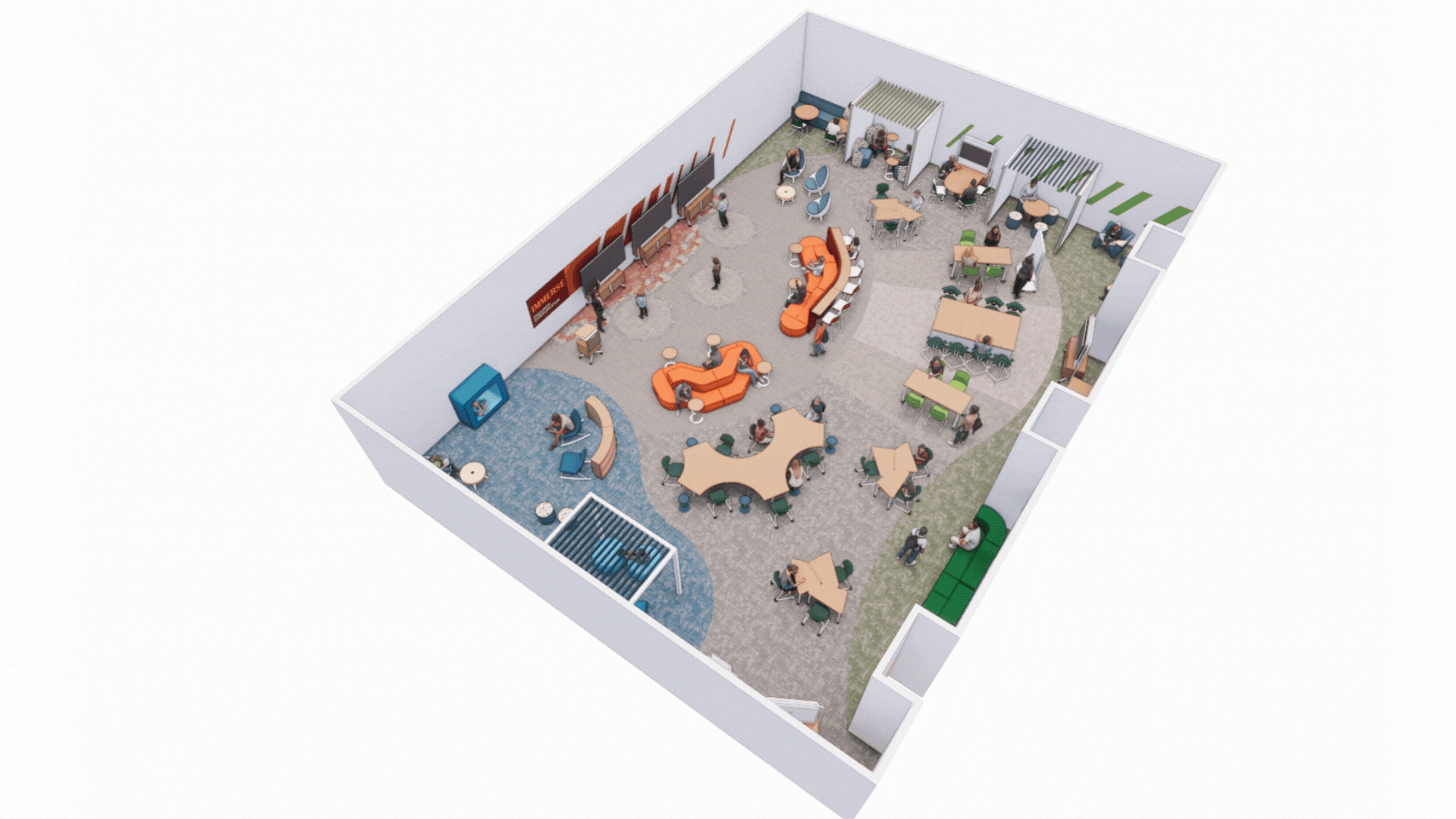Moody Nolan
Responsive Learning
Classroom A 210: Moody Nolan | Responsive Learning
Goal:
Our goal is to create a responsive learning environment that adapts to the individual needs of each student and encourages learning through collaboration rather than isolation. We aim to support the needs of students and teachers through a space designed for flexible teaching and meaningful student interaction at every stage of the learning process. Learning objectives include supporting students in developing executive functioning skills, navigating transitions, engaging purposefully with peers, and identifying environments that align with their cognitive and emotional needs.
Focus:
This learning environment contains a layout centered on fluid movement between three thematic zones: Discover, Immerse, and Reflect. These zones are not fixed or separated; instead, they transition naturally into one another, allowing students and educators to shift between modes of engagement based on task, focus, or energy level. Discover supports structured inquiry and guided exploration without the rigidity often found in traditionally compartmentalized classrooms, through reconfigurable tables and flexible furniture. Immerse is bold and energetic, built for individual exploration and group collaboration with minimal furniture making the space open and adaptable. Reflect, by contrast, is a quiet zone defined by soft hues and calming textures designed to slow down, decompress, and reset with secluded seating, soft materials and limited technology.
Impact:
The classroom’s open layout and flexible zoning support movement and encourage collaboration. Students move freely between Discover, Immerse, and Reflect based on task, focus, and learning preference. Reconfigurable furniture allows quick transitions between individual work, small group collaboration, and whole-class engagement, making the space adaptable to both student and instructional needs. Technology is largely centralized to support mobility and shared use but can be distributed across zones. The integration of design and technology reduces barriers to interaction and creates multiple entry points for collaboration, adaptable to varying goals and energy levels.
Partners:
-
HDA Hansen Distribution Agency
-
Martin Public Seating
-
KI
-
Fomcore
-
Pallas Textiles
-
Interface
